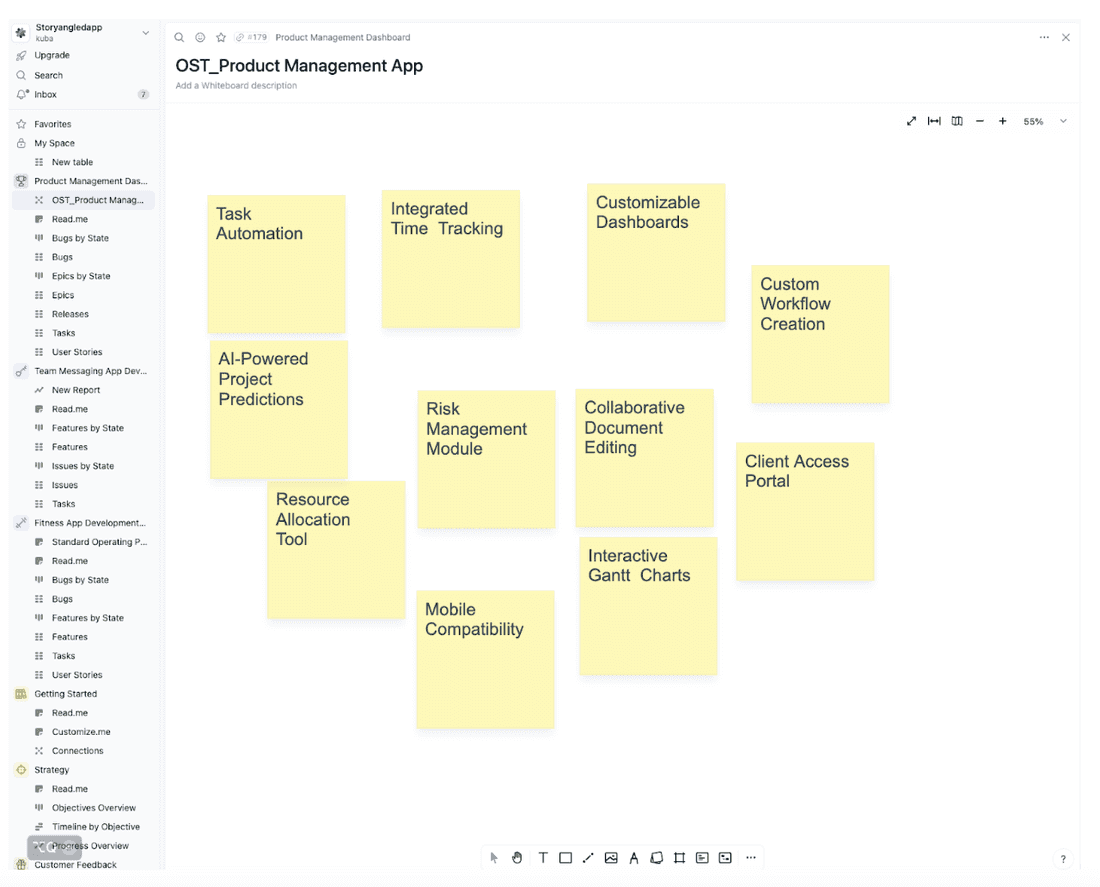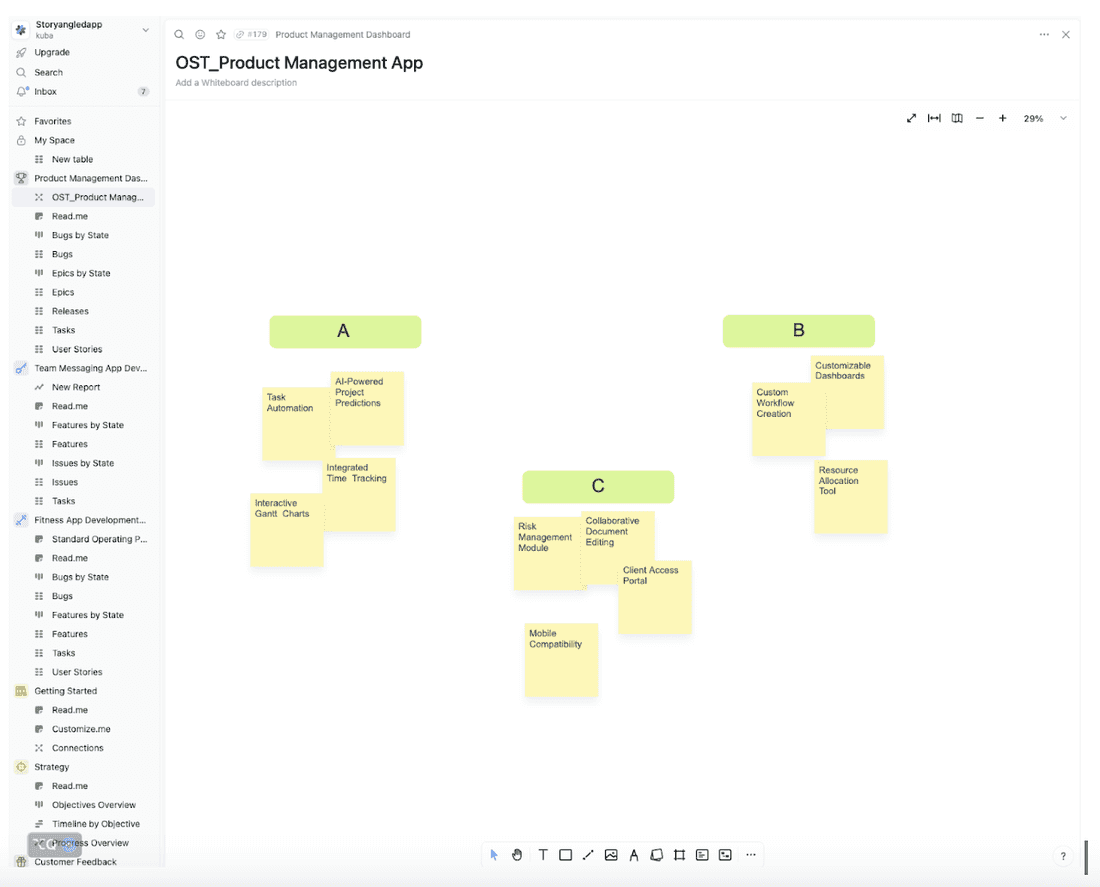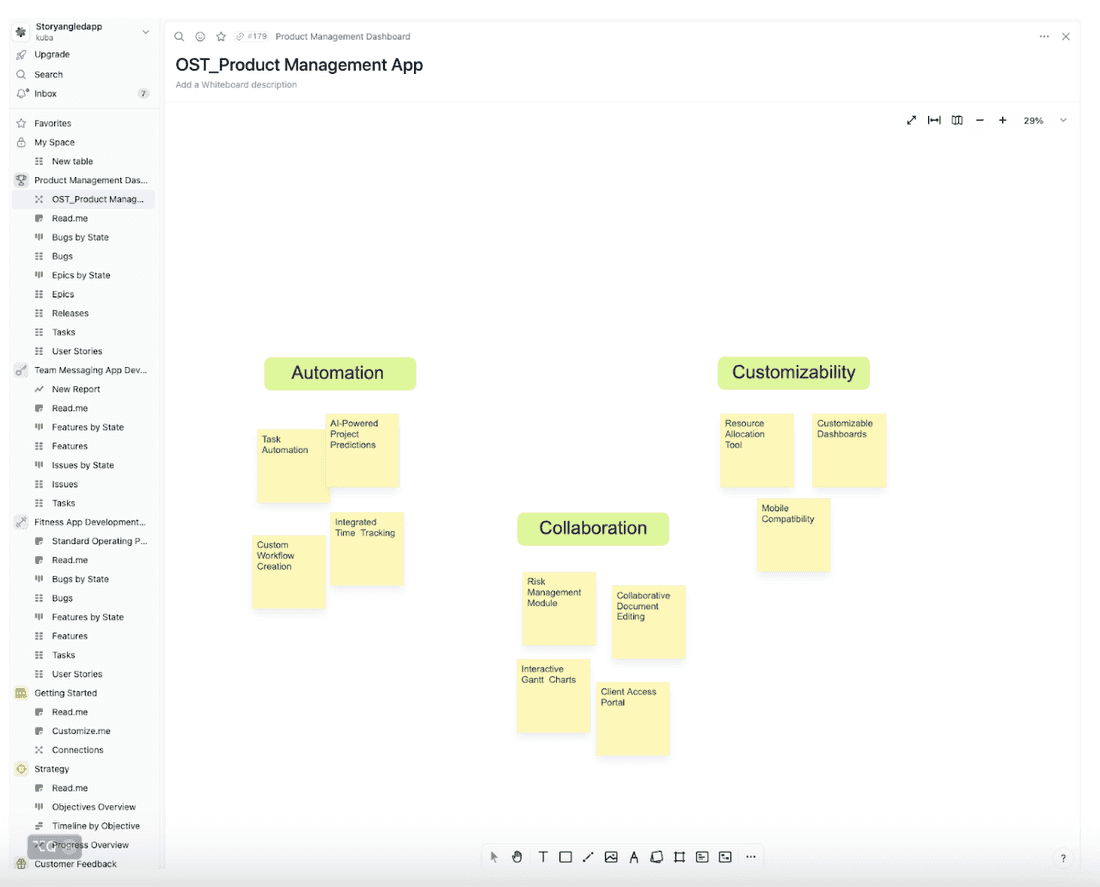KJ Method for Product Management: a Comprehensive Guide
Product Managers are the best at turning ideas into reality.
But this process isn’t easy. Especially when there are lots of good ideas and the author of each one expects you to turn it into a feature or a strategy.
Suddenly, instead of dealing with inspiring tasks, you deal with… a lot of noise.
The KJ method is one of the most effective techniques to avoid it. It can help product managers plan their work without leaving any team member feeling left out.
In this article, we’ll explain what the KJ method is and how you can use it in Product Management.
What is the KJ Method?
KJ method (also called affinity diagramming, affinity mapping, or thematic analysis) helps a group organize a large number of ideas into logical groups or categories.
You can use it for brainstorming sessions about your product or any other process or problem.
Jiro Kawakita developed the KJ method in the 1960s as an alternative to Western quantitative methods in ethnography (any ethnography fans here?).
Because of the method’s flexibility, it was soon adapted into multiple other fields - from quality control to UX research.
Let’s see how it works:
KJ Method in practice
The main goal of the KJ method is to help your team move beyond the preconceptions and habitual thinking about your product.
As the man himself, Kawakita puts it:
“…the complexity of our world has far outstripped any ready-made theories or hypotheses, and a priori assumptions and wishful thinking are useless”
This clearly applies to any Product Manager’s work. Remember how you had to explain a VC why the post they’ve seen on LinkedIn isn’t the right strategy for your product? Yeah, we feel you.
KJ method helps you tap into your team members’ intuition. You can understand how they see your product and its best way to move forward.
To start using it, you’ll need:
1. Sticky notes or cards
2. Marking pens
3. Large work surface (a table, a wall, floor)
Wait, you’re reading it after your team moved to a 100% remote model? No worries, we’ve got something for you, too.
Let’s see:
Step #1: Gather ideas on the sticky notes
Collect each idea from your team members on separate sticky notes. This can happen as a result of a brainstorming session you just had or a heated Slack conversation.
If you’re in the same room, simply put every idea on a sticky note.
Remote teams can open the Fibery’s Whiteboard and gather all the ideas there:

Usually, an affinity diagram (so, the diagram you’ll be preparing using the KJ method) has around 40-60 items. But if your diagram has 100 or even 2000 - that’s okay, too.
You’ll only need more coffee (and patience).
Step #2: Categorize the ideas
Here, you instruct your team members to look for relationships between individual ideas and sort them into 5-10 categories. No need to add names for those “groupings” here – we’ll do it later.
And here’s the catch:
Ask your team members not to consult with each other while they are organizing the ideas.
Everyone can group the ideas as they think it’s most appropriate. If someone put an idea into Category A and you think it should belong to Category B with a few more items – feel free to rearrange the board:

You can spread this process over a few days, where everyone can reflect on the ideas and adjust the categories based on their findings.
And if you fear your office cleaner will see your board and think: “What are those children playing in again?” before throwing it all into the trash, you might want to put the ideas in a safer space.
Step #3: Discuss the categories
After you settle on your board’s final look, gather the team again to define the categories for each group.
Once done, peek at how beautiful your board looks and then – dissect it slowly:
- Do you see any interesting patterns in the defined categories?
- Are there any surprises or outliers among all the groups?
- Which notes were the most controversial?
Keep the conversation open and let your team suggest changes to the current state of your diagram. If it makes sense to change anything – feel free to do so.
After that, look at your board again and see if any category needs a name change.
The key to naming your category is identifying the common thread for each group. The name should describe this thread.

And done! By now, your affinity diagram should show you interesting data and valuable ideas, leading to further analysis.
To help you apply this method in practice, let’s go through a few examples:
The KJ method outside product Management
Just as Jiro Kawakita intended, the KJ method has spread far beyond its ethnographic roots. Today teams in all sorts of fields rely on affinity mapping to synthesize messy qualitative info.
KJ method is often used among those professionals:
- Design Thinkers: To make sense of user research data.
- Hospital Workers: To group patient and provider needs. Based on the findings, they adjust the care protocols for increased efficiency.
- Educators: To cluster barriers students face, then remedy challenges, like ” distracting peers” or “unclear lessons”.
- City Planners: To map resident issues with KJ, from “potholes” to “empty parks”.
- HR: To solve any office drama with Janice in accounting and understand staff sentiment around culture, workloads, and professional development.
As you can see, all of those teams use the KJ method to make sense of a set of data they analyze. Knowing that, we can apply the same method in various Product Management jobs:
The KJ method in product Management
The KJ method is highly applicable in product management for gathering insights and aligning teams around priorities.
Some key uses include:
- Product Planning: To analyze customer feedback, market trends, and ideated features. KJ provides clarity on the highest-value work. Affinity groups emerge, showing natural product themes.
- Roadmapping: To arrange team ideas, requirements, and initiatives into affinity groups that create a visual roadmap showing the logical flow of work over time.
- Prioritization: To reach a consensus when debating which features to focus on, a KJ exercise categorizes tasks based on impact, effort, and other criteria. Plus, it avoids “loud voices” dominating.
- Stakeholder Alignment: To foster a shared understanding of the product direction across key partners, like engineering, design, or customer success.
- Research Synthesis: To map qualitative research, like interviews and surveys, and synthesize it into actionable takeaways.
The KJ method deserves a spot in any PM’s prioritization toolkit. With practice, product teams gain an easy yet powerful sensemaking technique everyone in the team can use.
The PM’s hot take
If you are a visual type and can see through the clutter easily, the KJ method (or affinity diagram just to make things harder) can be a handy tool. However, some of us can get annoyed by a plethora of random sticky notes, plus this method tends to fuel groupthink, which can seriously hijack the exercise. As always: experiment bravely, but do not trust blindly.
Conclusion
The KJ method is a simple but powerful heuristic for gathering messy ideas and turning them into categories that make sense.
It allows PMs to bring structure to nebulous backlogs and emerge with a clear work plan.
And if you need a safe place to store all your KJ sessions, check out Fibery’s Whiteboard capabilities and save those sticky notes for leaving funny messages on your pal’s monitor.
Psst... Wanna try Fibery? 👀
Infinitely flexible product discovery & development platform.